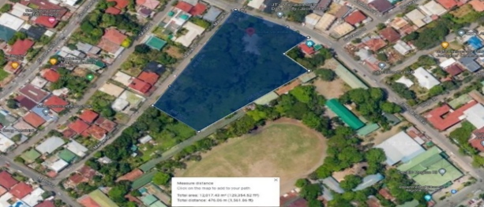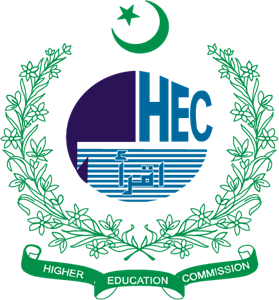Renaissance of Urban Public Parks: Sustainable Park Management Practices on Alleviating Park Physical Value
Abstract
 Abstract Views: 0
Abstract Views: 0
The sustainable management practices of urban parks consider responsibility towards the environment and society. Moreover, these also focus on the short-term gains and long-term effects of managing parks oriented towards a sustainable approach. It is equally important to consider the contribution of urban parks to sustainability as much as they are valued for their visitor attraction and appreciation of nature. The current study aimed to evaluate the sustainable park management practices that alleviate the public space's physical value of Doña Vicenta Park in Davao City. The study is a descriptive-quantitative research, where the sustainable park management practices of the Doña Vicenta Park were first identified and then assessed by evaluating the environmental sustainability level of the urban park. The specific results suggested that Doña Vicenta Park has a rating of 48.8% with 2.44 points out of a 5-point scoring. The urban park did not meet even half of the valuation standards, which may suggest that it needs to incorporate environmentally friendly practices and be able to adjust to the varying needs of the establishment in terms of sustainability. Allowing other sustainable practices in managing and maintaining the park, such as the provision of the following: organic waste management for composting solid waste, bioswales, upgraded park entrances, bicycle infrastructure, solar-reflective paving materials, waste collection and separation service strategies, community gardens, and other factors may further improve the physical value of its amenities, facilities, services, and utilities.
Downloads
References
Ahmad, S., Ayob, Z., Hussain, N. H. M., & Nayan, N. M. (2022). Assessment of landscape maintenance towards cost planning: Expert validation on the criteria of sustainable landscape maintenance for public park. Journal of the Malaysian Institute of Planners, 20(3), 87–98.
Ahmed, M. O. (2021). Sustainable development of urban parks. International Journal of Advances Engineering and Civil Research, 1(1), 49–60. https://doi.org/10.21608/ijaecr.2023.214444.1012
Aly, D., & Dimitrijevic, B. (2022). Systems approach to the sustainable management of urban public parks. Urban Forestry & Urban Greening, 68, Article e127482. https://doi.org/10.1016/j.ufug.2022.127482
Asimgi̇L, B. (2012). Sustainable planning of urban parks – The case of Balıkesir, Turkey. Megaron, 7(1), 1–14.
Carmona, M. (2019). Principles for public space design, planning to do better. Urban Design International, 24(1), 47–59. https://doi.org/10.1057/s41289-018-0070-3
Chan, C.-S., Marafa, L. M., & Van Den Bosch, C. C. K. (2015). Changing perspectives in urban park management: A longitudinal study of Hong Kong. Managing Sport and Leisure, 20(1), 56–76. https://doi.org/10.1080/13606719.2014.944411
Chan, C.-S., Si, F. H., & Marafa, L. M. (2018). Indicator development for sustainable urban park management in Hong Kong. Urban Forestry & Urban Greening, 31, 1–14. https://doi.org/10.1016/j.ufug.2018.01.025
Chen, B., Lu, S., & Hu, S. (2013, April 21–22). Assessing the public recreational space in the urban park from the psychological and behavioral aspects, a case study of Quyuan Park, Hangzhou, China [Paper presentation]. The 2nd International Conference On Systems Engineering and Modeling, Beijing, China.
Chen, K., Lin, H., You, S., & Han, Y. (2022). Review of the impact of urban parks and green spaces on residence prices in the environmental health context. Frontiers in Public Health, 10, Article e993801. https://doi.org/10.3389/fpubh.2022.993801
Chen, Q., Wang, C., Ge, L., Zhang, M., & Wu, S. (2019). Measurement of urban park accessibility from the Quasi-Public goods perspective. 11(17), Article 4573 https://doi.org/10.3390/su11174573
Cudis, C. (2022, June 10). Public parks to make Davao “more livable city.” Philippine News Agency. https://www.pna.gov.ph/index.php/articles/1176386
Dizdaroglu, D. (2022). Developing design criteria for sustainable urban parks. Journal of Contemporary Urban Affairs, 6(1), 69–81. https://doi.org/10.25034/ijcua.2022.v6n1-7
Gonzalez, T., Berger, P., Sanchez, C. N., & Mahichi, F. (2023). Sustainability of urban parks: Applicable methodological framework for a simple assessment. Sustainability, 15(21), Article e15262. https://doi.org/10.3390/su152115262
Hung, S.-H., Wu, C.-C., Yeh, Y.-C., Yeh, A., Chang, C.-Y., & Tang, H.-F. (2022). A study on measuring ecosystem service and physical and psychological health benefits in agricultural landscape. HortScience, 57(6), 708–714. https://doi.org/10.21273/HORTSCI16542-22
Kazemi, F., Hossein pour, N., & Mahdizadeh, H. (2022). Sustainable low-input urban park design based on some decision-making methods. Land Use Policy, 117, Article e106092. https://doi.org/10.1016/j.landusepol.2022.106092
Mendoza, I. F. (2022, August 12). City eyes to open park in Dona Vicenta in OCT. Pressreader. https://www.pressreader.com/philippines/sunstar-davao/20220811/281530819797654
Mohandespor, S., & Yücel, G. (2019). Evaluation of urban park design criteria in the Case Of Taraqi Park (Afghanistan, Herat). Journal of Architectural Research and Development, 1(1), 62–75. https://doi.org/10.26689/jard.v3i4.770
Newsline Philippines. (2023, August 5). P76-million Doña Vicenta Park unveiled in Davao City. https://newsline.ph/davao-region/2023/08/05/p76-million-dona-vicenta-park-unveiled-in-davao-city/
Nimi, K. S. (2020). Environment value: Concept and Measurement, 6(6), 350–353. https://doi.org/10.36713/epra2013
Olivares, S. P. (2023, June 1). Cenro: City to open more public parks – Mindanao Times. Mindanao Times. https://mindanaotimes.com.ph/70858/
Page, S., Nielsen, K., & Goodenough, R. (1994). Managing urban parks: User perspectives and local leisure needs in the 1990s. The Service Industries Journal, 14(2), 216–237. https://doi.org/10.1080/02642069400000024
Pantaloni, M., Marinelli, G., Santilocchi, R., Minelli, A., & Neri, D. (2022). Sustainable management practices for urban green spaces to support green infrastructure: An Italian case study. Sustainability, 14(7), Article e7. https://doi.org/10.3390/su14074243
Sadeghian, M. M., & Vardanyan, Z. (2015). A brief review on urban park history, classification and function. International Journal of Scientific & Technology Research, 4, 120–124.
Saron, R. G. (2023a, August 4). 30 workers to maintain Doña Vicenta Park. Mindanao Times. https://mindanaotimes.com.ph/30-workers-to-maintain-dona-vicenta-park/
Saron, R. G. (2023b, August 13). City set to open new park. Mindanao Times. https://mindanaotimes.com.ph/city-set-to-open-new-park-official/
Sunnexdesk. (2023, August 4). Doña Vicenta Park now open. SunStar. https://www.sunstar.com.ph/davao/local-news/dona-vicenta-park-now-open
Takyi, S. A., & Seidel, A. D. (2017). Adaptive management in sustainable park planning and management: Case study of the city of Vancouver Parks. Journal of Urban Ecology, 3(1), Article ejuw009. https://doi.org/10.1093/jue/juw009
Wang, J., & Foley, K. (2021). Assessing the performance of urban open space for achieving sustainable and resilient cities: A pilot study of two urban parks in Dublin, Ireland. Urban Forestry & Urban Greening, 62, Article e127180. https://doi.org/10.1016/j.ufug.2021.127180
West, P., Igoe, J., & Brockington, D. (2008). Parks and Peoples: The Social Impact of Protected Areas. Annual Review of Anthropology, 35, 251–277. https://doi.org/10.1146/annurev.anthro.35.081705.123308
Yu, X. (2021). Research on urban park management problems and countermeasures from the view of new public service theory—Taking chengdu as an example. Open Access Library Journal, 8(8), Article e8. https://doi.org/10.4236/oalib.1107811
Zanin, E. M., Santos, J. E. dos, & Henke-Oliveira, C. (2005). Environmental analysis and zoning for an urban park management purpose. Brazilian Archives of Biology and Technology, 48, 647–655. https://doi.org/10.1590/S1516-89132005000500018

Copyright (c) 2025 Joyce Marie S. Cagampang, Nurvin Zary E. Bustillo

This work is licensed under a Creative Commons Attribution 4.0 International License.
JAABE follows an open-access publishing policy and full text of all published articles is available free, immediately upon publication of an issue. The journal’s contents are published and distributed under the terms of the Creative Commons Attribution 4.0 International (CC-BY 4.0) license. Thus, the work submitted to the journal implies that it is original, unpublished work of the authors (neither published previously nor accepted/under consideration for publication elsewhere). On acceptance of a manuscript for publication, a corresponding author on the behalf of all co-authors of the manuscript will sign and submit a completed Copyright and Author Consent Form.
Copyright (c) The Authors





